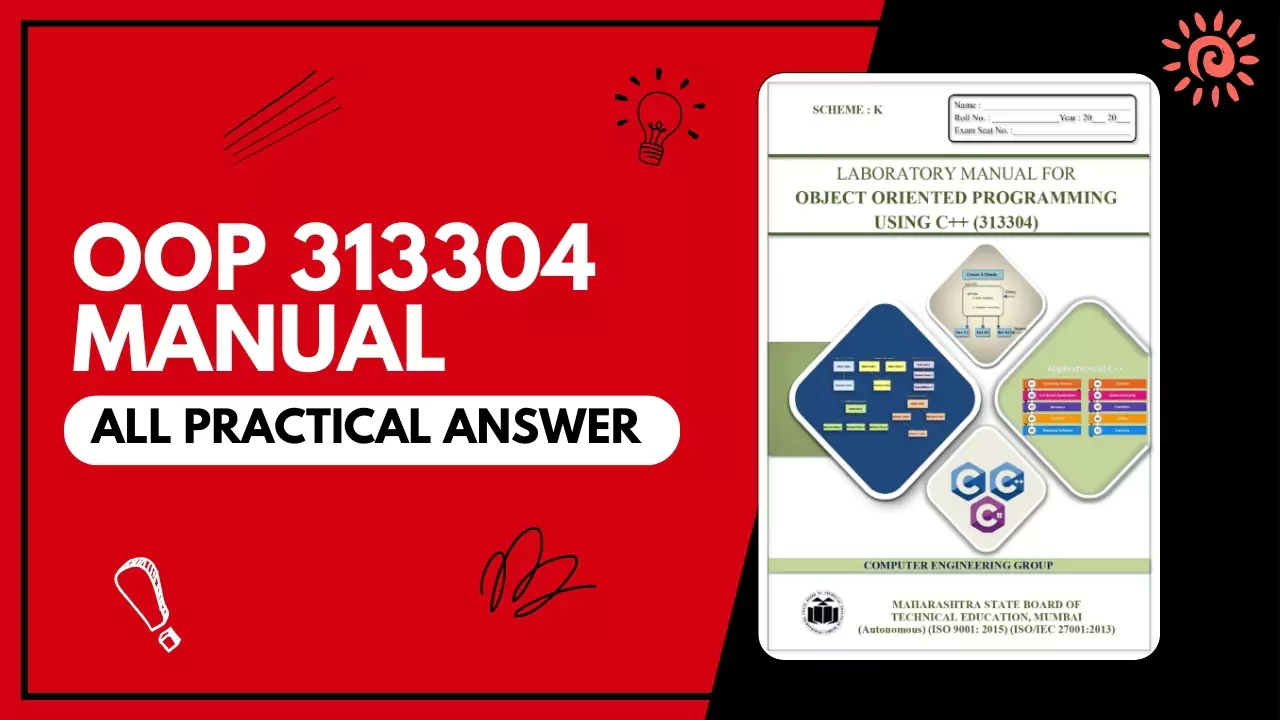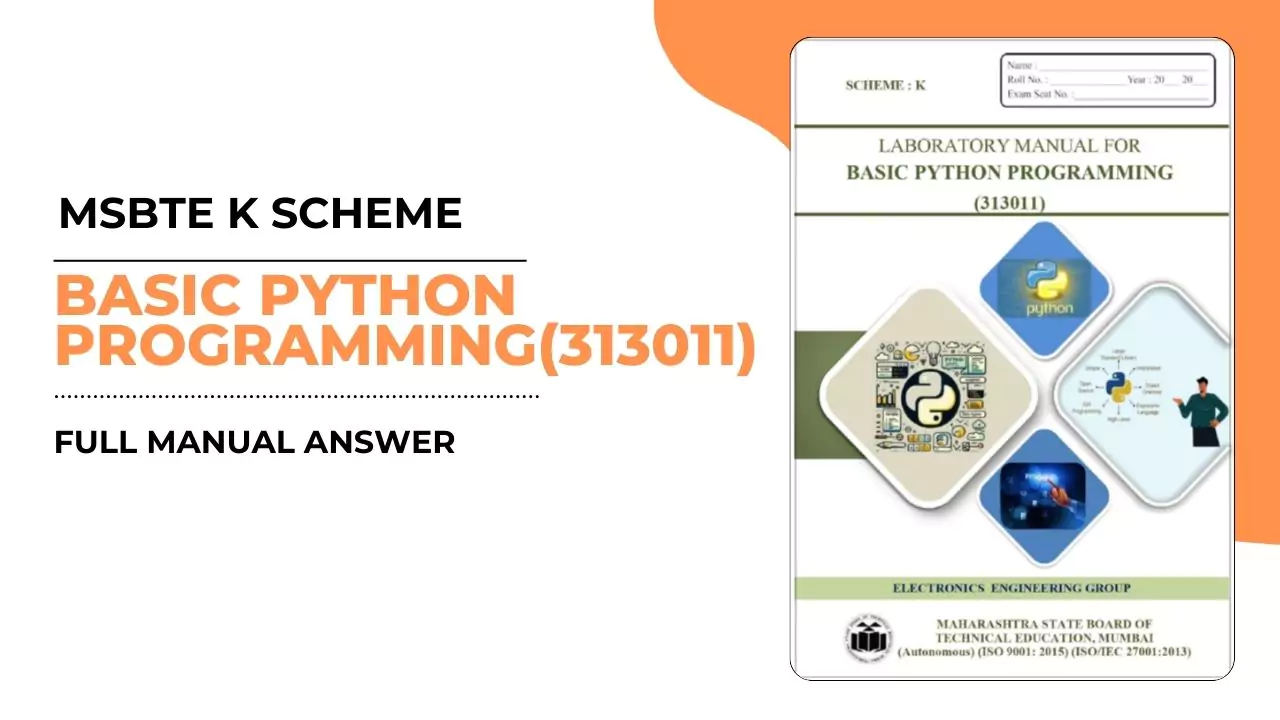Programming in C 312303 Practical No 22: Write a C program to demonstrate User-defined Functions
Hello, students in this post we solve programming in C 312303 manual practical no.22 in which we answer all practical related questions based on the C program to demonstrate User-defined Functions.
Students will be able to define and declare user-defined functions and can understand the scope of variables. Students will use parameters using call by value and call by reference in the C program.
Exercise
1. Find the factorial of a given number using the function
Answer:
#include <stdio.h>unsigned long long factorial(int n) {// Base case: Factorial of 0 is 1if (n == 0) {return 1;}// Recursive case: Factorial of n is n * factorial(n-1)unsigned long long result = factorial(n – 1) * n;// Check for overflow (result exceeding the maximum value of unsigned long long)if (result < 0) {printf(“Error: Factorial overflow for number %dn”, n);return 0; // Indicate error}return result;}int main() {int num;printf(“Enter a non-negative integer: “);scanf(“%d”, &num);if (num < 0) {printf(“Error: Factorial is not defined for negative numbers.n”);return 1; // Indicate error}unsigned long long fact = factorial(num);if (fact == 0) {// Error handling from the factorial function} else {printf(“The factorial of %d is %llun”, num, fact);}return 0;}
Output;
Enter a non-negative integer: 5
The factorial of 5 is 120
=== Code Execution Successful ===
2. Create a function to find GCD of given number. Call this function in a program.
Answer:
#include <stdio.h>int gcd(int a, int b) {// Base case: If b is 0, then GCD is aif (b == 0) {return a;}// Recursive case: GCD(a, b) = GCD(b, a % b)// We use the modulo operator (%) to find the remainder when a is divided by b.return gcd(b, a % b);}int main() {int num1, num2;printf(“Enter two integers: “);scanf(“%d %d”, &num1, &num2);int greatest_common_divisor = gcd(num1, num2);printf(“The GCD of %d and %d is %dn”, num1, num2, greatest_common_divisor);return 0;}
Output:
Enter two integers: 8 5
The GCD of 8 and 5 is 1
=== Code Execution Successful ===
Algorithm
1. Define a function gcd(a, b) that takes two integers a and b as input.
2. Base Case:
If b == 0: This means a is perfectly divisible by b, so itself is the GCD. Return a.
3. Recursive Case:
Use the Euclidean algorithm:
Calculate the remainder (r) when a is divided by b using the modulo operator (%).
Recursively call gcd(b, r). This effectively calculates the GCD of the smaller number (b) and the remainder from the previous division (r).
4. In the main function:
Prompt the user to enter two integers.
Call the gcd function with the entered numbers to get the result.
Print the calculated GCD.
Flowchart
+———+
| Start |
+———+
|
v
+———+
| Input a |
+———+
|
v
+———+
| Input b |
+———+
|
v
+———+ +———+
| b == 0? | | Yes |
+———+ +———+
| |
v v
+———+ +———+
| Yes | | Return a|
+———+ +———+
| |
v v
+———+ +———+
| No | | r = a % b |
+———+ +———+
| |
v v
+———+ +———+
| gcd(b, r)|———>| GCD |
+———+ +———+
| |
v v
+———+ +———+
| Output | | (result) |
+———+ +———+
| |
v v
+———+
| End |
+———+
Practical Related Questions
1. Write a program to reverse the number 1234 using a function.
Answer:
#include <stdio.h>int reverse_number(int num) {int reversed = 0;while (num != 0) {int last_digit = num % 10;reversed = reversed * 10 + last_digit;num /= 10;}return reversed;}int main() {int original_number = 1234;int reversed_number = reverse_number(original_number);printf(“The original number is %dn”, original_number);printf(“The reversed number is %dn”, reversed_number);return 0;}
Output:
The original number is 1234
The reversed number is 4321
=== Code Execution Successful ===
2. What would be the output of the following programs:
b.
#include <stdio.h>main() {int i = 45, c;c = check(i);printf(“n%dn”, c);}int check(int ch) {if (ch >= 45) {return 100;} else {return 10 * 10;}}
Output:
/tmp/aQ4wqt5ugk.c:3:1: warning: return type defaults to ‘int’ [-Wimplicit-int]
3 | main() {
| ^~~~
/tmp/aQ4wqt5ugk.c: In function ‘main’:
/tmp/aQ4wqt5ugk.c:7:7: warning: implicit declaration of function ‘check’ [-Wimplicit-function-declaration]
7 | c = check(i);
| ^~~~~
/tmp/aQ4wqt5ugk.o
100
=== Code Execution Successful ===
Conclusion
We Successfully completed practical no.22 of Programming in C 312303 manual in which we answered all practical related questions.



